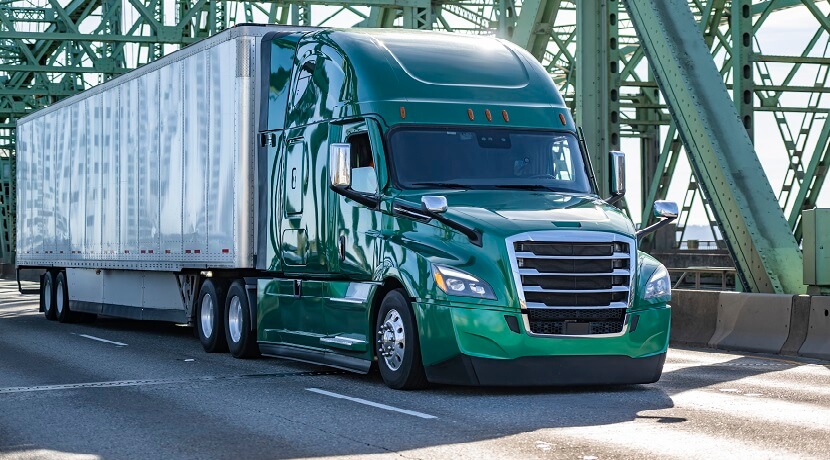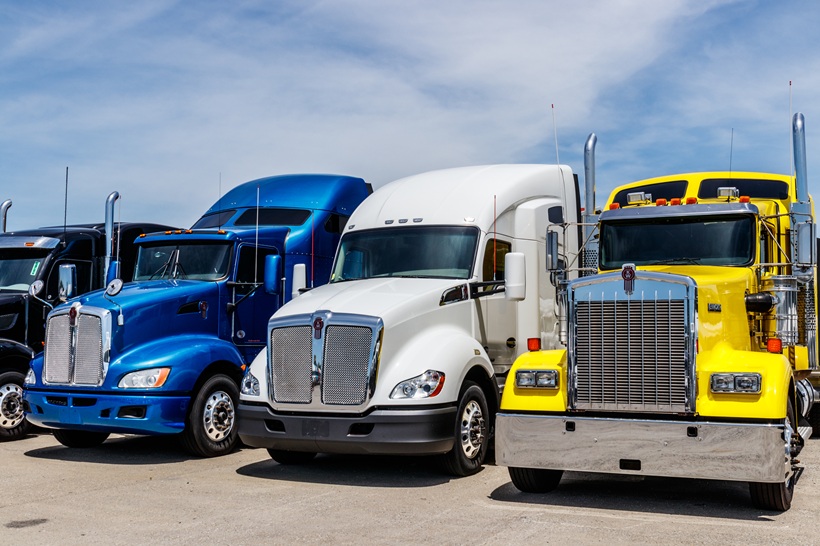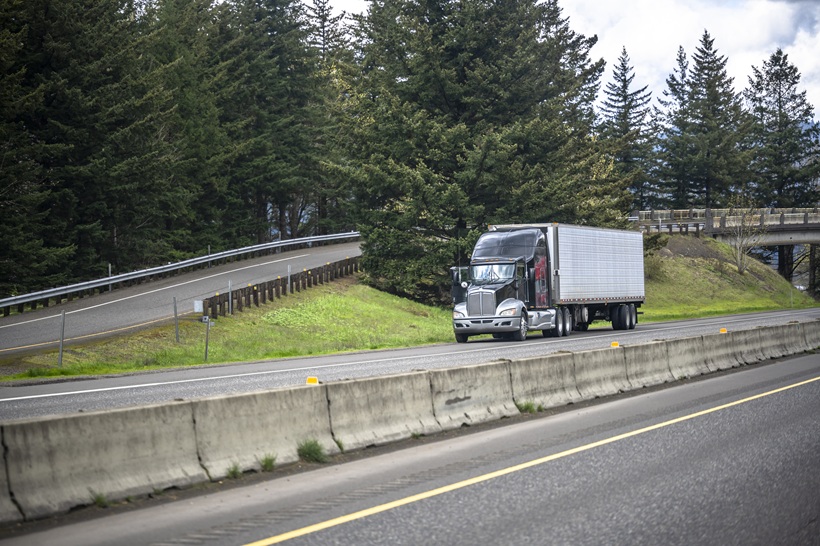
How a Full Suite of Telematics Can Help a Carrier’s Bottom Line
Today, telematics devices are supercharged tech tools that enable carriers to have non-stop insights about trucks, drivers, and shipments. This blog will take a look at several important areas of telematics and how they can help a carrier with profitability.
Telematics was once a controversial word for carriers and was synonymous with devices and software that could break the bank and only offer a limited use case. After all, telematics’ primary purpose was to electronically log driver hours – something that had been done manually by millions of drivers and thousands of fleets since 1937, as federally mandated by the Federal Motor Carrier Safety Administration (FMCSA).
After years of court battles and revised regulations, the FMCSA’s Electronic Logging Device (ELD) mandate took effect in 2017. Today, ELDs and other telematics devices are not only capable of compliance with federal Hours of Service (HOS) requirements, they’re also supercharged tech tools that enable carriers to have non-stop insights about trucks, drivers, and shipments.
In this blog, we’ll look at several important areas of telematics and how they can help a carrier with profitability.
Hours of Service
Logging hours of service is the most traditional use of telematics in road transportation and the reason why the ELD mandate was implemented. This subset of telematics ensures that drivers and carriers comply with federal HOS regulations, including a 14-hour shift limit, a 70-hour driving time limit over eight days, a 34-hour off-duty weekly clock reset, and more. But how does following these rules benefit carriers?
For starters, hours of service regulations lessen driver fatigue, decreasing the risk of at-fault collisions. Settlements for accidents can range from five- and six-figure amounts to millions of dollars depending on the circumstances.
But even companies who play a little bit loose with hours of service can pay the price in the medium and long term. Offenders of HOS rules can be placed out of service, have fines levied on their companies, and/or have their safety rating downgraded by the FMSCA. In turn, those demerits can increase the insurance premiums required to be on the road and make brokers less likely to deal with the potential risk of working with a carrier.
When a carrier is diligent about logging hours of service and adhering to FMCSA regulations with an approved, reliable, and intuitive ELD, HOS-related hits to the bottom line are rare if not completely prevented.

Real-time navigation and tracking
“Time is money” is a phrase that resonates in transportation and logistics. If a carrier doesn’t know where a truck is or the route a driver is taking, it is effectively in the dark about the status of the shipment and if it will arrive at its destination on time.
A full-scale telematics solution, including navigation, offers both real-time visibility into driver location and optimizes directions in a way that takes driver hours and road conditions into account. This helps ensure on-time arrival, minimizes costly detention time in unloading a shipment, and lessens unnecessary and money-draining fuel consumption.
Additionally, navigation and asset or trailer tracking help keep shipments secure. If a driver is in a place they’re not supposed to be, a dispatcher can be notified immediately, and further escalation steps can be taken if a lost shipment is suspected. On a similar note, a carrier can customize geofencing capabilities in a telematics solution, which is important if trucks are continually entering and exiting an area like a port where speed limits must be followed to ensure safe delivery or pickup.
Video telematics
Dash cams have been around in transportation for longer than the ELD mandate, but the combination of dash cams, artificial intelligence, and telematics is a newer development that can help carriers coach drivers about unsafe habits.
For example, a state-of-the-art telematics platform can provide visibility and notifications to about the following driving events (and much more):
- Speeding
- Hard braking
- Extreme acceleration
But when combined with a dashcam, fleet managers can refer to the times those events occurred and determine if the driver needs to be coached about unsafe behavior. If the dashcam has AI functionality and both inside and outside-facing lenses, additional driver behaviors can be pinpointed, such as:
- Veering into another lane
- Using a phone while driving
- Headtilts
- A driver taking his or her eyes off the road
- Other actions associated with driver fatigue or inattention
With data and camera footage in tow, a telematics and AI solution can help assign a driver with a safety score and further coach them on things to improve. This scoring can help lower insurance premiums, as the carrier can demonstrate that its drivers quantitatively and qualitatively adhere to safe driving standards.
Additionally, if a driver is implicated in an accident of any severity, dashcam footage can confirm that a non-commercial vehicle was at fault and exonerate the carrier from any liability.
Driver exoneration
Unfortunately, accidents and collisions happen. And with the amount of money that gets awarded in some nuclear verdicts involving a Class 8 truck, there’s an incentive for some in the legal profession to take advantage of terrible situations and seek millions from a judgment.
These scenarios assume the driver is at fault – but video telematics can prove otherwise – making driver exoneration an incredibly valuable aspect of telematics.
Think of the harrowing dash cam footage released in May 2024 of a driver in Louisville who ended up hanging from the Clark Memorial Bridge in her cab. Now imagine that it was one of your fleet’s trucks involved in that wreck and you didn’t have a dash cam. It’s impossible to know the outcome in that case. But in real life, that dash cam footage was incontrovertible proof that an irresponsible driver in a smaller car caused the horrifying collision.
Fleet maintenance
A telematics device like an ELD typically plugs into a vehicle’s OBD-II port, with OBD standing for On-Board Diagnostics. A modern telematics system aptly lives up to that port name by transmitting thousands of data points about the vehicle’s well-being to a fleet management platform. This includes the condition of many important parts of the truck, such as the:
- Engine
- Transmission
- Tires
- Battery
- Brakes
Telematics can also monitor load-specific criteria like shipment temperature for refrigerated trucks.
A carrier can help its bottom line by setting myriad reminders in its telematics system, which will let fleet managers know when part of a vehicle needs attention. By not ignoring these warnings, a carrier can save money in the long run and prevent load-halting breakdowns on the road.
Like hours of service, vehicle condition plays a crucial role in how a carrier is viewed by the FMCSA for road safety purposes. Therefore, if a carrier isn’t cognizant of issues with the truck, it runs the real risk of a downgraded safety rating or an issue that could cause an at-fault accident.
Telematics that matter to your fleet
It pays for carriers to embrace technology. Investment in a telematics solution means your fleet can gain visibility into key aspects of compliance, obtain full visibility of issues with shipments and trucks, and coach your drivers on important driving behaviors for continued safety on the road.
Telematics solutions from Transflo, powered by ATI, offer full integration with the best-in-class Geotab fleet management platform and the long-standing, easy-to-use Transflo Mobile+ driver app. Furthermore, our telematics experts are eager to work with you to on customized solutions that work specifically for your fleet and aren’t one-sized-fits-all applications.
For more information on telematics, ELDs, and asset tracking, contact us today and set up a demo.
TL;DR
Modern telematics has evolved beyond basic ELD compliance into comprehensive profit-driving tools for carriers. Key benefits include: (1) Hours of Service compliance prevents costly fines, insurance hikes, and safety rating downgrades, (2) real-time navigation and tracking optimizes routes, ensures on-time delivery, reduces fuel costs, and secures shipments, (3) video telematics with AI coaches drivers on unsafe habits, lowers insurance premiums, and provides accident exoneration footage, and (4) fleet maintenance monitoring prevents costly breakdowns and maintains FMCSA safety ratings. The bottom line: comprehensive telematics solutions provide visibility and data that directly translate to cost savings, risk reduction, and improved profitability across all aspects of fleet operations.



